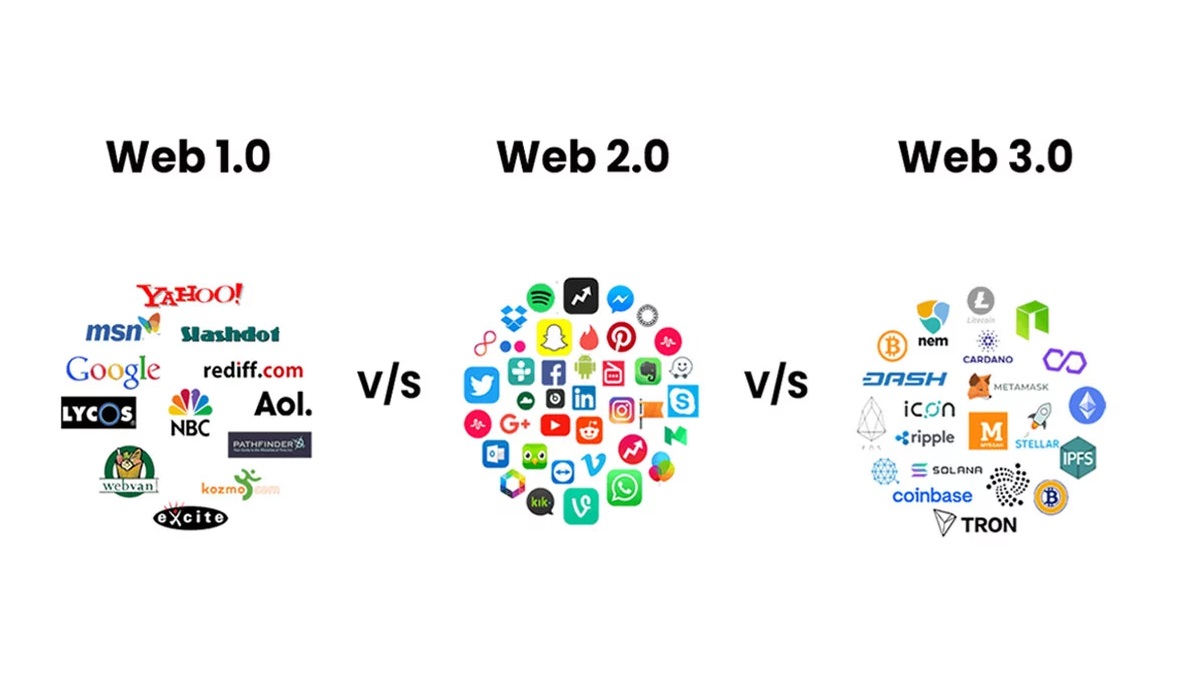Web1, Web2, and Web3 are terms that describe the evolution of the internet, each phase marking a shift in how users interact with and experience the web. Here’s a breakdown of each:
1. Web 1.0 (The Static Web)
Web1, or the Static Web, refers to the early phase of the internet, which lasted from the 1990s to the early 2000s. This phase is characterized by:
- Static content: Webpages were mostly read-only and provided information without any user interaction.
- Personal websites and portals: Most websites were simple, static pages where users could access information but not contribute or interact with it.
- Minimal user interaction: Users were passive consumers of content, as there were no platforms for collaboration or participation.
- Basic technology: Web 1.0 primarily used HTML, images, and basic design elements.
Example: A typical Web1 site would be like an online brochure or a static information page, such as early personal websites or news portals.
2. Web 2.0 (The Social and Interactive Web)
Web2, also known as the Social Web or Interactive Web, emerged in the early 2000s and continues today. It represents a more dynamic, user-focused web. Key characteristics of Web2 include:
- User-generated content: Users could now create and share their own content, such as blogs, videos, and social media posts.
- Interactivity and collaboration: Platforms allowed for two-way communication, with websites like Facebook, YouTube, and Wikipedia enabling users to interact and contribute.
- Dynamic web applications: Webpages became more interactive, using technologies like AJAX, making them responsive and customizable without reloading entire pages.
- Community-driven platforms: Websites became spaces for users to participate in discussions, share opinions, and collaborate with each other.
- Data-driven business models: Platforms like Facebook, Twitter, and Google grew by collecting and monetizing user data, primarily through advertising.
Example: Platforms like Facebook, YouTube, Instagram, and collaborative tools like Google Docs are products of Web2.
3. Web 3.0 (The Decentralized Web)
Web3, often referred to as the Decentralized Web or Semantic Web, is the most recent and emerging phase of the internet. It emphasizes user control, decentralization, and improved intelligence. Key features include:
- Decentralization: Web3 is powered by blockchain technology, which distributes control over data and applications across a peer-to-peer network, rather than being controlled by centralized entities (like large tech companies).
- User data ownership: Unlike Web2, where platforms own user data, Web3 aims to give users full ownership of their data, with privacy and security being central concerns.
- Smart contracts: Web3 enables smart contracts, which are self-executing agreements stored on the blockchain. These automate transactions without intermediaries.
- Cryptocurrencies and digital economies: Web3 integrates digital assets like cryptocurrencies and tokens, allowing users to participate in decentralized finance (DeFi) and own unique digital items via NFTs (Non-Fungible Tokens).
- Semantic Web: The goal is also to make the web more intelligent, allowing machines to better understand and process information, making searches and interactions more relevant and personalized.
Example: Decentralized platforms such as Ethereum, IPFS, Decentralized Finance (DeFi) applications, and NFT marketplaces represent the Web3 era.
Summary of Differences
| Phase | Web 1.0 | Web 2.0 | Web 3.0 |
|---|---|---|---|
| Era | 1990s to early 2000s | Early 2000s to present | Emerging (2020s and beyond) |
| Content | Static, read-only | Dynamic, user-generated | Decentralized, user-controlled |
| Interaction | Passive | Interactive, social | Peer-to-peer, decentralized |
| Technology | HTML, basic webpages | AJAX, APIs, social media | Blockchain, smart contracts, AI |
| Data control | Owned by website owners | Controlled by large platforms | Controlled by users, decentralized |
Web3 represents the future of the internet, focusing on decentralization, enhanced privacy, and user sovereignty over their data and digital assets.
